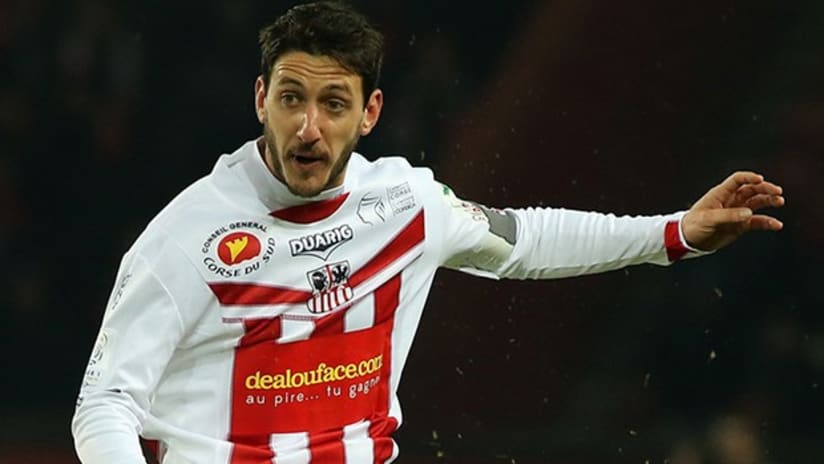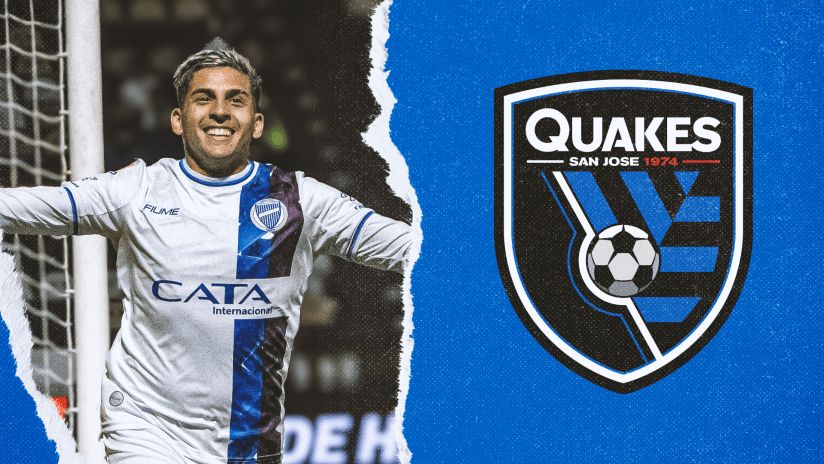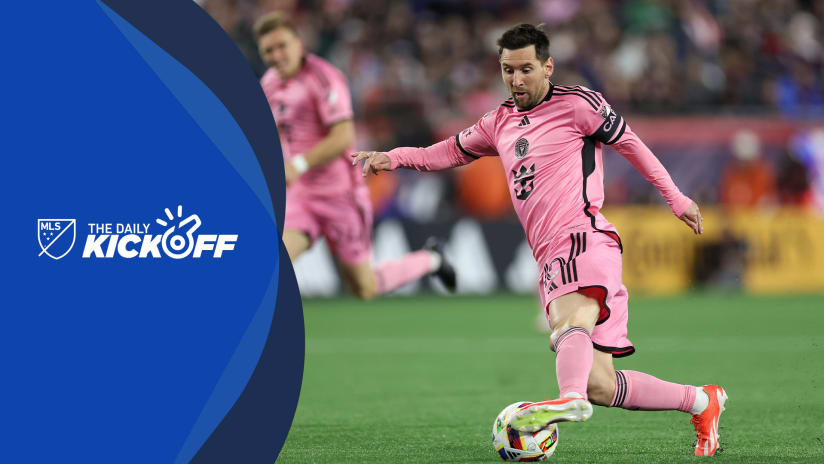In a day of bookend moves for the San Jose Earthquakes, the club bid farewell to their most creative individual player from 2012 – Marvin Chávez – while welcoming the man they hope will spark their offense in 2014: French midfielder Jean-Baptiste Pierazzi.
By confirming Tuesday the widely reported signing of Pierazzi, the Quakes added a 28-year-old they feel can be an attacking force in the center of midfield, even though he played in a far more defensive role for AC Ajaccio, his hometown club. In 179 appearances with Ajaccio in France’s top two divisions, Pierazzi has scored two goals.
The Quakes hope Pierazzi will help to replace the wizardry of Chávez, whose clear desire to play elsewhere was fulfilled when San Jose dealt him to Colorado in exchange for speedy attacker Atiba Harris.
“[Pierazzi] strikes a great ball, he can spread the ball from side to side and has a great work rate,” Quakes general manager John Doyle told MLSsoccer.com by phone. “He was asked to play very defensively in France. We’ll be excited to turn him loose.”
Pierazzi will likely step into the role vacated by Rafael Baca, who was sold last month to Mexican side Cruz Azul, and could team alongside Sam Cronin as a pair of box-to-box central midfielders. Previously, Cronin was tasked with providing more defensive cover and Baca often cycled the ball out to the wings to initiate San Jose’s attack through Cordell Cato, Chávez’s replacement, or Shea Salinas.
“He can be someone that goes forward more, for sure,” San Jose head coach Mark Watson told MLSsoccer.com by phone of Pierazzi. “There’s different ways to produce attacking soccer and get guys in those positions to move the ball around, and he can definitely be a part of that. … I think one of his best qualities is that he’s very versatile and can play at both ends of the field.”
As for Chávez, his departure seemed a foregone conclusion despite a career-best 13 assists in 2012. Injuries, international duties with Honduras and a fall from favor with Watson limited Chávez to just 15 league appearances last year.
While saying that he still likes Chávez personally, Doyle was unstinting in laying the blame for a business relationship gone sour.
- Get the latest Earthquakes news at SJEarthquakes.com
“Marvin broke up with us,” Doyle said. “We tried to salvage it a few times, and it just wasn’t salvageable. And I don’t think it was salvageable within the team. It’s a thing where everybody in the team has to want to be in the team. And I know it’s a cliché, but they have to be selfless and the team has to come first. An individual player can’t come first. I think from Mark Watson, the players, my standpoint, it’s nice to have closure.”
Harris provides an interesting option for the Quakes as they try to revamp their attack, which slid from a team-record 72 goals in 2012 to just 35 last season. At 6-foot-3, the St. Kitts and Nevis international won more aerial battles (148) than any other player in MLS last season, according to Opta, and he can play either as a forward or along the right wing, where he was most often used by the Rapids last year.
“You can go at it a bunch of different ways,” Watson said of Harris’ positioning. “He’s very comfortable with the ball at his feet, and we’ll look to use that. He’s very comfortable getting the ball behind. But he’s also a big body that a lot of fullbacks, just size-wise, will have a difficult time with.”
The Quakes also received allocation funds as part of the deal, which were used to provide “substantial” relief from Harris’ hit on the salary cap, according to Doyle, who is still targeting a handful of midfielders and forwards with hopes of landing at least one more impact player this winter.
“We wanted to clear salary space and get some allocation money and we were able to do that ...,” Doyle said. “We’re in a good place in [terms of] the cap. We’re definitely not rich, but we’re in a much better place than we were a year ago with the cap.”














